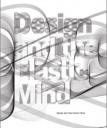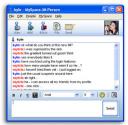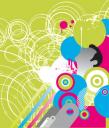Design and The Elastic Mind
Saturday, February 14th, 2009 Designers make a contribution to society by translating the great revolutions in science into artifacts for all to use. This is the theme of a wonderful exhibit in 2008 on Design and the Elastic Mind at the Museum of Modern Art in New York City. You can listen to an interview with the senior curator here or better, navigate the exhibit itself here.
Designers make a contribution to society by translating the great revolutions in science into artifacts for all to use. This is the theme of a wonderful exhibit in 2008 on Design and the Elastic Mind at the Museum of Modern Art in New York City. You can listen to an interview with the senior curator here or better, navigate the exhibit itself here.
In many ways, the entire exhibit is focused on how design impacts our cognition. The key theme is how designers help us adapt to change (or not) via the artifacts they create. Another dimension, more germane to the purpose of this blog, is how designers have translated the revolution in cognitive science into artifacts we can all use. Browse the catalog and let me know what you think.
Are there artifacts in the exhibit that clearly showcase the recent revolution in cognitive science?












